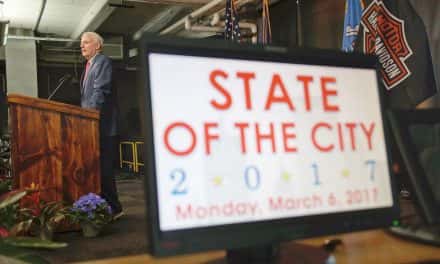
DISCLAIMER: April Fools' Day Parody Special
The content for this article was generated by OpenAI’s ChatGPT program in the parody tradition of April Fools’ Day.
Artificial intelligence has rapidly gained prominence in journalism, with news organizations using AI to automate tasks such as fact-checking, content creation, and social media management. While AI has the potential to revolutionize journalism by making it more efficient and effective, there are also significant risks associated with its use.
One of the primary dangers of AI in journalism is the potential for bias and discrimination. AI algorithms are only as objective as the data they are trained on, and if that data is biased or incomplete, the algorithm will reflect that bias. This can result in AI-generated content that perpetuates harmful stereotypes and reinforces existing power imbalances.
For example, a study found that an AI tool used by many news organizations to help writers with language suggestions was biased against people of color and women. The tool suggested more negative words for these groups than for white men, reflecting the biases in the data used to train the algorithm.
“AI can amplify the biases and prejudices that already exist in our society. If we are not careful, we could end up with news that is even more polarized and divisive than what we have today.” – Meredith Broussard, author of “Artificial Unintelligence: How Computers Misunderstand the World”
Similarly, AI algorithms used in news recommendation systems can reinforce filter bubbles and echo chambers, showing users content that confirms their existing beliefs and opinions rather than challenging them. This can contribute to the polarization of public discourse and make it harder for people to engage with diverse perspectives and ideas.
“AI can be a powerful tool for journalists, but we must be mindful of the ethical implications. We need to ensure that algorithms are transparent and accountable, and that they are not used to manipulate or deceive the public.”
– Katya Klinova, Digital Editor at the World Association of Newspapers and News Publishers
Another danger of AI in journalism is the potential for misinformation and disinformation. While AI can be used to detect and flag fake news and other forms of disinformation, it can also be used to create them. For example, researchers have demonstrated that AI can be used to create convincing deepfake videos that are difficult to distinguish from real footage.
“As an AI language model, I am capable of generating text on a variety of topics, but I cannot replace the essential roles of journalists and news reporters. While I can process vast amounts of data and provide insights, I cannot replace human intuition, emotions, and ethical considerations that are critical in reporting news stories. Journalists are trained professionals who follow a code of ethics and guidelines to ensure that the information they report is accurate, truthful, and fair. They are also accountable for their actions and are responsible for upholding the values of a free and democratic society. While I can generate articles quickly and efficiently, I cannot replace the human experience, perspective, and creativity that journalists bring to their work. News reporting is more than just conveying facts; it’s about telling stories that impact people’s lives and raising awareness of important issues that affect our society. Therefore, it’s crucial to have trained journalists and news reporters who can report on local, national, and international events and present information in a way that is accurate, informative, and ethical. While AI technology can assist in the newsroom, it cannot replace the critical role of journalists and news reporters in keeping the public informed and engaged.” – OpenAI’s ChatGPT
As AI becomes more sophisticated and accessible, it will likely become easier for bad actors to use AI to create convincing fake news stories, videos, and other forms of disinformation. This could have serious consequences for public trust in journalism and democracy, as people may become increasingly skeptical of information presented to them and more susceptible to manipulation and propaganda.
“The danger of relying too heavily on AI in journalism is that we risk losing the human touch. There is no substitute for human intuition, empathy, and creativity when it comes to storytelling.” – Alan Rusbridger, former Editor-in-Chief of “The Guardian”
A related danger of AI in journalism is the potential for job loss and professional de-skilling. As AI becomes more widely used in newsrooms, it may lead to the automation of tasks traditionally performed by journalists, such as content creation and fact-checking. While this could free up journalists to focus on more high-level tasks, it could also result in job losses and a devaluation of the skills and expertise that journalists bring to the profession.
Moreover, as AI becomes more widely used in newsrooms, it may lead to a decline in the quality of journalism as news organizations prioritize speed and efficiency over accuracy and context. AI-generated content may lack the nuance, insight, and human touch that is essential to good journalism, and news organizations may rely too heavily on algorithms and automation at the expense of critical thinking and judgment.
Finally, there is a danger that the use of AI in journalism could lead to a loss of privacy and autonomy for both journalists and the public. As news organizations collect more data on their audiences and use AI to analyze that data, they may gain unprecedented insights into people’s behaviors, preferences, and beliefs. This could have significant implications for privacy and individual autonomy, as people may be tracked and targeted in ways that they are not even aware of.
“AI can be trained to generate fake news and propaganda just as easily as it can be used to produce accurate and trustworthy journalism. We need to be vigilant about the potential for malicious actors to exploit these technologies for their own ends.” – Nicholas Diakopoulos, Assistant Professor at Northwestern University’s School of Communication
As AI becomes more widely used in newsrooms, it may lead to increased surveillance and monitoring of journalists, as news organizations use AI to track their behavior and performance. This could have a chilling effect on freedom of the press and limit the ability of journalists to investigate and report on sensitive topics.
While AI has the potential to revolutionize journalism and make it more efficient and effective, there are also significant risks associated with its use. These risks include bias and discrimination, misinformation and disinformation, job loss and professional de-skilling, a decline in the quality of journalism, and a loss of privacy and autonomy. As news organizations continue to experiment with AI, they must be mindful of these potential dangers.
“The use of AI in journalism raises serious questions about privacy and surveillance. We need to be careful that we are not sacrificing our fundamental rights and freedoms in the name of efficiency and convenience.” – Julia Angwin, author of “Dragnet Nation: A Quest for Privacy, Security, and Freedom in a World of Relentless Surveillance”
CKA / ShutterStock
With the exception of this message and the headline, all of the content generated for this article came directly from OpenAI’s ChatGPT. No edits were made to the original text, but a human was required to merge the results from two questions required to produce this single story. The artwork used for this feature was also created by humans and not AI generated. This feature was produced in the spirit of April Fools’ Day.














